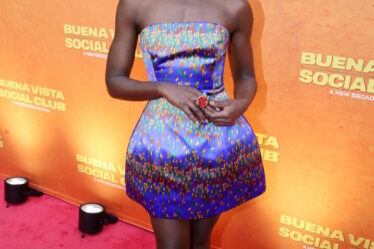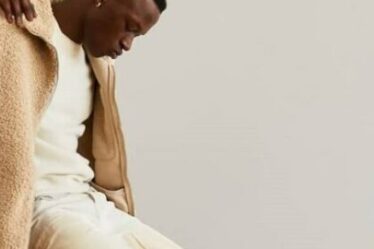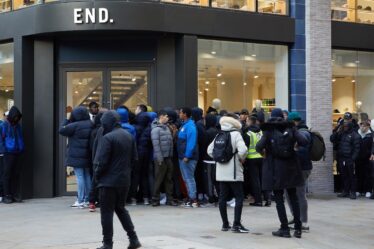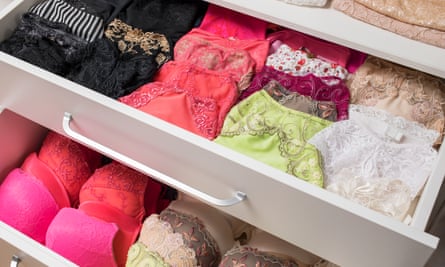
There was a period of time in my life (about a decade) when I had the perfect pair of underwear. Luckily they were a style repeated again and again by a large brand so over time, they became the only underwear I bought and eventually, they were the only underwear I owned, aside from the odd pair here and there purchased for a specific outfit.
I loved this underwear because they were extremely lightweight and breathable. They were made from a soft nylon microfibre that was durable but also a little sheer. They had a slight boy-leg that was edged with very thin lace, so they were both sporty and pretty. They had a moderate amount of coverage across the back and were so well cut they left no visible panty lines.
I collected them primarily in black but over time added some brighter colours. A few years ago – to my dismay – the style and material was slightly altered. The lightweight mesh was replaced with a denser, silkier polyester and the cut changed so the elasticated lace around the edge dug into my skin.
Ever since, I’ve been on the look-out for the new perfect pair. This week I asked some experts for help.
The look: smooth and simple
Pleasing though it may look, prettier underwear made from lace or other delicate, textural weaves will not hold up to everyday wear, as the material has the potential to snag and won’t withstand friction from being worn against zippers or waistbands.
Rebecca Van Amber, a textile scientist at RMIT University, says you should consider the thickness of the yarn, its strength and how tightly it has been knitted. “This can be difficult for many consumers to assess, but generally smoother, thicker fabrics will be more durable.”
The fabric: stretchy, natural blends
The material your underwear is made from is very important. Josie Aynsley, head designer for Bonds, says it will affect things such as comfort, stretch and how well the underwear holds its shape.
She suggests looking for blends with a majority of natural or cellulose fibres such as cotton, hemp, bamboo, modal or lyocell. These materials are soft, breathable and absorbent, which makes them ideal for garments worn underneath clothes and against the skin.
The design team at Boody say underwear made from 100% natural fibres may lose its shape too quickly, so these fibres need to be mixed with a small amount of synthetics to avoid sagging. “Blending … will give you a fabric that has both comfort and durability.”
When choosing a fibre to enhance durability, elastane is the best option. It allows for a four-way stretch making it perfect for garments worn close to the body. Van Amber says a little bit of elastane helps “facilitate fit, especially during movement” and will also assist with recovery, meaning the garment will snap back to the same size and shape after it has been worn.
The fit: depends on the outfit
The choice between underwear with more coverage (full, high-waisted or boy-short) versus less coverage (G-string, bikini or Brazilian) is a personal one and will probably vary from day to day.
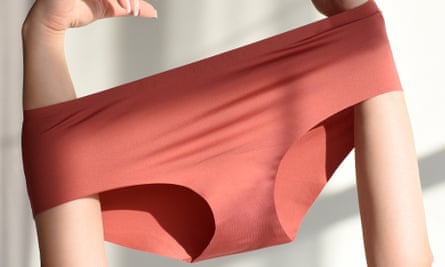
The team at Boody say that full briefs will give a flatter line under dresses and skirts, but “if you are wearing tailored-fit pants a G-string or Brazilian cut would be a better fit”.
If your priority is having no visible panty lines, “avoid underwear with elastic or trims at the edges and try higher cut or thong styles,” Van Amber recommends. Instead she suggests “seamless underwear that fits properly and isn’t too tight”.
At the gym: shorts or G-strings
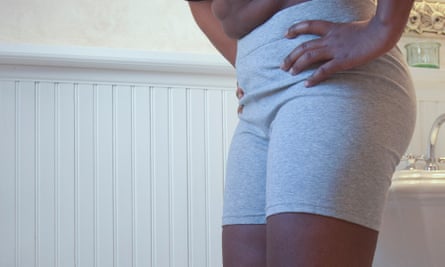
When choosing underwear for the gym, Aynsley says “for me a good workout undie would be a lightweight microfibre fabric”. But this is personal: “Some women prefer natural fibres to work out in, as it can be more breathable due to the cotton fibre and open weave.”
Van Amber says body type and activity makes a huge difference when it comes to workout underwear. She says “something like a short that prevents chafing” might be the first preference for many women. Bike-short and boxer brief styles have both become increasingly available in recent years.
“Others might prefer to work out in a thong that isn’t visible under yoga pants,” says Van Amber. Boody’s team confirm that “a G-string is often the most popular cut for under gym wear” but suggest that anything form-fitting and moisture-wicking should be comfortable under activewear.
Period underwear
Almost every woman has underwear she prefers to wear when she gets her period. It’s usually a style that combines comfort with security against leakages (mine are a pair of full briefs made from a soft black cotton).
In recent years a lot of brands have extended the concept of period underwear by creating underpants designed to be worn in place of sanitary products.
When working on Bonds’ range Aynsley incorporated five layers of fabric, “with the layers closest to your body being quick-absorbent, and the external layers helping to prevent leaks”.
Since the underwear can be washed and reused over and over again, it is often described as a sustainable alternative to tampons and other single-use sanitary products.
A 2021 product test conducted by Choice found that, although some testers did not enjoy the feeling of wearing an extra thick gusset, most widely available brands of period underwear worked well for most people.

